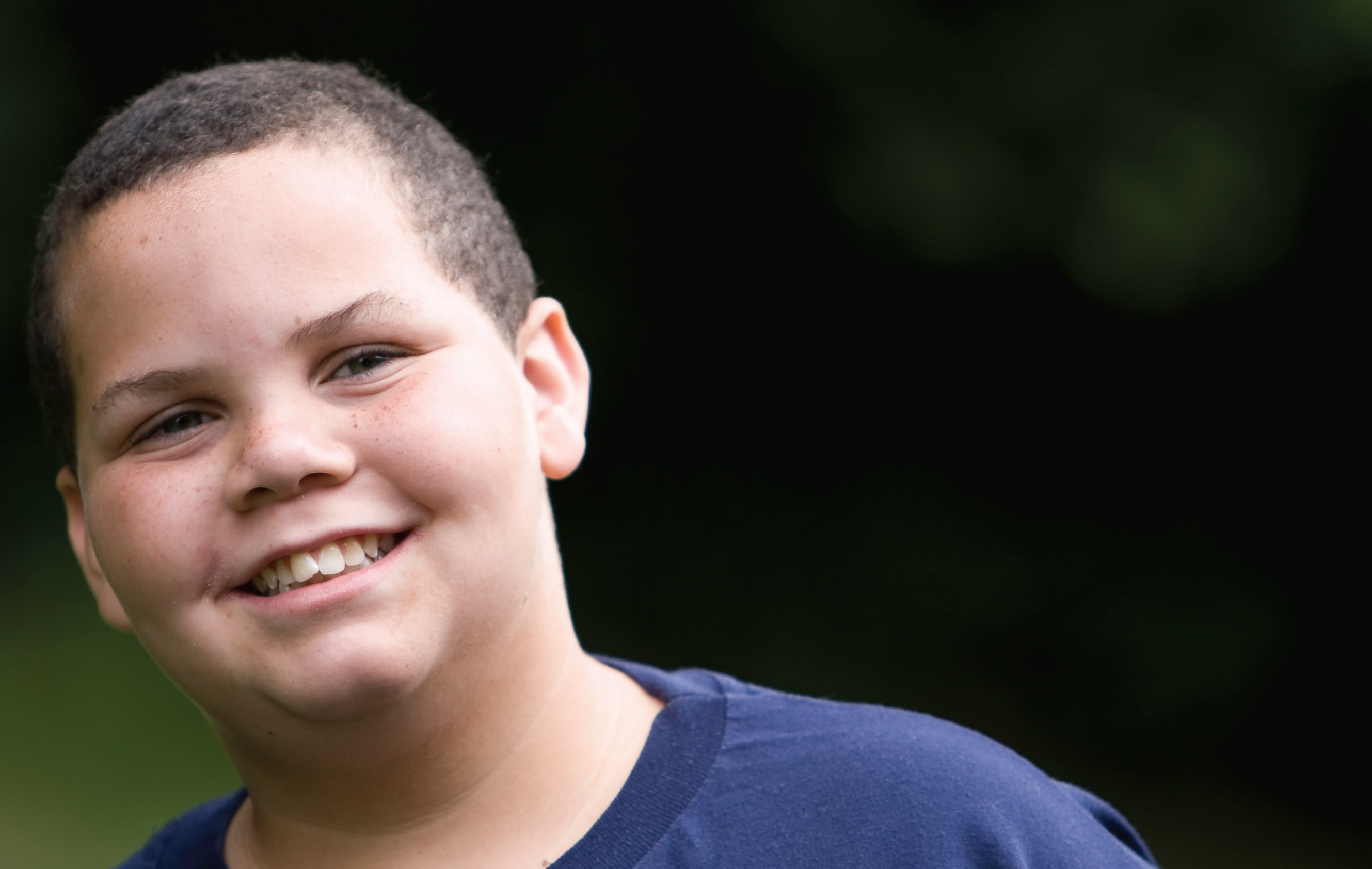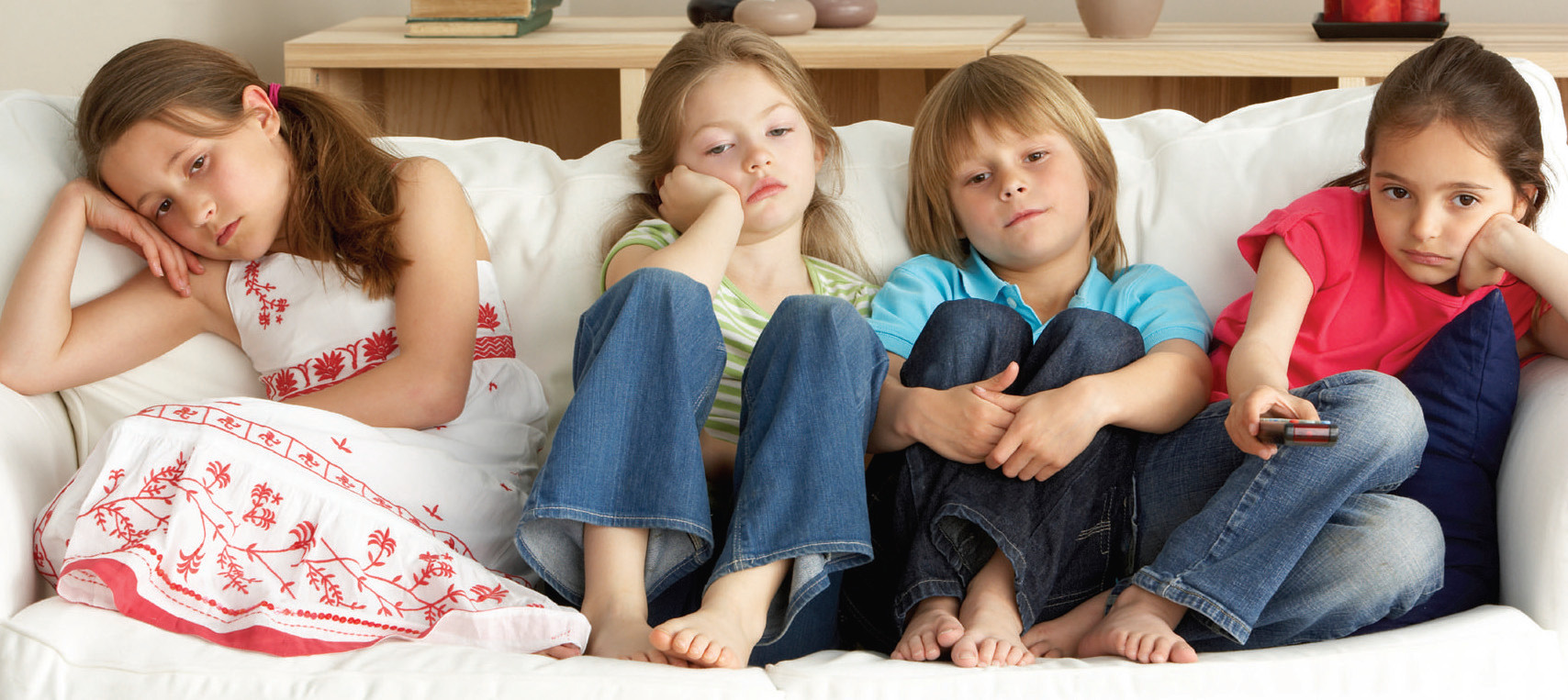The big issue
In Population Health
Follow this topic
Bookmark
Record learning outcomes
New NICE guidelines urge parents to toughen up in a bid to curb obesity. How far do these guidelines go, and what other steps are needed to turn back the tide of childhood obesity?

Parents should avoid giving their children sweet treats as rewards and should limit children’s screen time, even during school holidays. These are part of new guidelines recommended by NICE in a bid to stem the tide of childhood obesity. While some have criticised the guidelines as ‘nannying’, obesity experts welcome the advice, saying it’s time we got tougher.
Childhood obesity has reached frightening levels both in the UK and worldwide. The most recent National Child Measurement Programme found that 22.5 per cent of four to five year olds and 33.5 per cent of 10-11 year olds are overweight or obese. Being overweight or obese is becoming normalised – a poll conducted for the National Obesity Forum (December 2014) found that only six per cent of Britons consider themselves obese and half think they’re a healthy weight.
In fact, 25 per cent of women and 24 per cent of men in the UK are now obese and, within the EU, Britain is second only to Hungary in obesity levels. Obesity costs our economy around £44.7 billion, second only to smoking in its impact on public health.
The scale of the problem
Some 28 per cent of children aged two to 15 are overweight or obese in the UK, according to Health and Social Care Information Centre (HSIC), and around 80 per cent of obese children are likely to remain obese as adults. We know that deprived children are more at risk – the prevalence of obesity among the most deprived 10 per cent of children is twice that of the least deprived 10 per cent, according to Public Health England. Obesity is also affecting an increasing number of younger children.
A study revealed at the European Congress on Obesity found that the UK and Ireland had the highest prevalence of obesity in under fives across Europe at 23 per cent and 27 per cent respectively. This is having a profound effect on children’s health. Over the past decade, an increasing number of children have been diagnosed with type 2 diabetes.
Being overweight as a child is also associated with increased cardiovascular risk factors. Other health risks include fatty liver disease, gallstones, asthma, sleep disordered breathing and musculoskeletal conditions. Childhood obesity also affects mental health and wellbeing.
It has been associated with depression in adolescence, and overweight children are more likely to be bullied. What’s more, a study published at this year’s European Congress on Obesity found that obese children are far less likely to finish schooling than normal weight peers.
Nice recommendations
The new NICE guidelines (NG7, March 2015) make a range of recommendations around weight and physical activity. Those which address childhood obesity include:
- Drink water instead of sugary drinks/sports drinks while being active
- Maintain healthy eating and physical activity most days, including school holidays
- Avoid giving sweet treats as rewards or gifts
- Reduce TV/screen time – e.g. have TV-free days or set screen limits to a maximum of two hours a day
- Avoid giving sugary drinks – choose water or sugar-free drinks
- Reduce total fat intake
- Eat breakfast, but this should reflect healthy eating advice
- Encourage children to be active at every opportunity
- Eat meals with children/teens
- Help children/teens to get enough sleep and explain to parents/carers that lack of sleep increases the risk of weight gain.
What the experts say
TM asked experts on childhood obesity and nutrition what they thought of the new NICE recommendations and how parents could be helped to put them into practice. Professor Susan Jebb, nutrition scientist, professor of diet and population health at Nuffield department of Primary Care Health Sciences at the university of Oxford (who chaired the NICE group), says:
“I think the new guidelines are a helpful summary of the evidence we tried to turn into practical strategies. We are not suggesting children never have sweets – the point is about not positioning sweets as a reward. We know from behavioural sciences that this is not helpful in establishing healthy eating patterns.â€
Malcolm Clark, co-ordinator of the Children’s Food Campaign led by Sustain, says: “I don’t think parents will view these guidelines as patronising. Society has changed greatly in the last 20-30 years – sweets used to be an occasional treat; they’re now an everyday staple. But I agree it is a challenge for parents to find healthier ways to reward children.â€
Tam Fry at the National Obesity Forum says: “We do need these tougher guidelines. It is realistic to ask parents not to reward their children with sweets, but whether they take notice is another matter. They definitely need more education around healthy eating.†The recommendation to cut screen time has been welcomed.
“We know that the more sedentary the behaviour, the greater the risk of excess weight gain, so we could have said ‘spend less time watching TV’. But during the consultation, people asked how they could do this, so we have offered possible ways,†says Professor Jebb. Tam agrees: “I think guidelines on screen time are essential. A maximum of two hours a day would make a huge difference to obesity levels.â€
Sugary drinks are a huge issue for children’s health.“The easiest way to avoid the issue is not to give these in the first place. However, you can swap these for sugar-free or lowsugar versions of their favourites and get children used to no sugary drinks between meals. Check sugar levels on labels before you buy and portion drinks out – they don’t need the whole bottle or can at once,†says Malcolm.
Eating with children has been proven to help reduce weight gain. “There are many reasons why shared family meals might be protective – for example, children may be more likely to establish good eating habits, enjoying a broad range of foods including less energy dense foods such as fruit and vegetables and may be less likely to snack on energy dense foods between meals or while watching TV,†says Dr Adrienne Cullum, NICE public health analyst.
“Both eating and cooking with children helps reduce obesity. It teaches them about healthy choices. You take more time to eat, portion sizes are monitored and more vegetables are usually eaten. It also helps with mental wellbeing – you spend time talking to each other,†says Malcolm. Professor Jebb agrees: “In general, the nutritional quality of family meals is better than meals eaten alone. There is also an opportunity for parents to role-model healthy eating.â€
Tam says: “Eating together is important as conversation slows the eating process. This gives time for signals to pass from stomach to brain to indicate fullness. If you eat alone, you tend to eat faster and more.†So how does getting more sleep help? “The evidence considered by the independent committee developing the guidelines indicated that children who sleep an hour or two less than recommended for their age are at greater risk of being overweight or obese,†says Dr Cullum.
“Lots of studies show an association between lack of sleep and greater risk of obesity. We don’t fully understand all the reasons why, but certainly it affects hormones linked to appetite control. Staying up late also increases the chances of late night eating, often on snack foods. It may even be that getting a good night’s sleep makes it easier to get up in the morning in time for breakfast before school,†says Professor Jebb.
Â

Experts agree that guidelines on screen time are essential
Â
Is the food industry to blame?
Many experts are calling for consistent regulations across all forms of media to protect children, and for TV adverts for unhealthy food/drinks to be screened after the 9pm watershed. Current regulations for non-broadcast advertising are weak, says the British Heart Foundation.
“The rules are vague and don’t distinguish between healthy and unhealthy products. They also fail to cover a number of common marketing techniques targeted at children. For example, brand characters, brand marketing and product packaging featuring games and competitions are not included in the regulations.â€
Malcolm agrees: “There are still many loopholes on advertising to children. We need tougher regulations, as voluntary codes don’t work. We’d like a 9pm watershed on these adverts, stronger rules on online advertising and Government laws to push industry to change marketing practices.â€
The practice of placing sweets by tills in supermarkets is changing. Tesco and Lidl have banned confectionery from their checkouts. Sustain hopes other supermarkets will follow their lead. Sustain is also calling for the introduction of a 20p per litre duty on sugary drinks to reduce consumption among children. The revenue generated would be used to set up a children’s health fund.
The group would also like to see one clear method of food labelling which uses traffic light colours, making it easy for children to understand.
Â
Children’s diet crisis
According to Sustain, British children now consume 25 times more confectionery and 30 times more soft drinks than in the 1950s. Some 92 per cent of children consume more saturated fat than recommended, 86 per cent consume too much sugar, 72 per cent too much salt and 96 per cent don’t eat enough fruit and vegetables. Without action, 55 per cent of boys and 70 per cent of girls could be overweight or obese by 2050, according to the recent Foresight report on obesity.
What can pharmacy staff do?
“Practitioners who provide information to help different population groups maintain a healthy weight, such as pharmacists, might find it particularly helpful to flag the ‘non-health’ benefits, such as the enjoyment gained from shared physical activities,†says Dr Adrienne Callum, NICE public health analyst.
“Practitioners should tailor messages for different groups, ensuring they are clear, consistent, specific and non-judgmental. It definitely is worth pointing out weight problems to parents as obesity has become normalised, so many don’t realise their children are overweight. However, it’s important to use a nonthreatening tone and to know what local services you can offer to parents,â€Â says Malcolm Clark, co-ordinator of the children’s food campaign, led by Sustain.
Tam Fry at the National Obesity Forum adds: “Pharmacy staff are willing and well placed to help the public with weight loss advice. They represent a huge local resource we could tap into much more.â€
Society has changed greatly in the last 20-30 years – sweets used to be an occasional treat; they’re now an everyday staple

